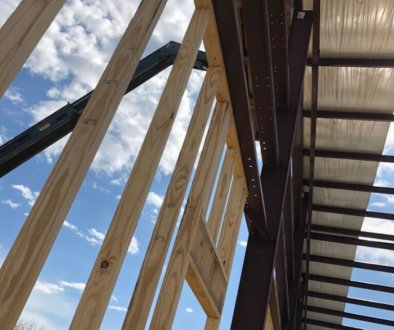 Comfortable temperatures are essential in commercial buildings. They ensure that employees and other occupants are comfortable and productive. Chiller systems are often used in commercial buildings to help maintain the right temperature and humidity levels.
Comfortable temperatures are essential in commercial buildings. They ensure that employees and other occupants are comfortable and productive. Chiller systems are often used in commercial buildings to help maintain the right temperature and humidity levels.
As with any other operating cost, most commercial operations should strive to reduce heating and cooling expenses. One great way to do that is to improve the efficiency of the systems. Chiller performance can be improved in a number of ways.
Maintaining Water Cooled Chiller Efficiency
Water-cooled chillers, as the name implies, rely on cold water to cool a building. There’s a central unit that contains a compressor, pumping refrigerant through an evaporator coil to extract heat and cool down the water that circulates through. The chilled water is pumped to each of the dedicated air handlers throughout the building. Each of these incorporates a cooling coil and a fan, which draws warm air over the coil and pushes cool air back into the room. The water circulates back to the chiller when it has absorbed heat energy. The heat energy is dispersed outside through a chiller tower, and the process starts all over again.
The main advantage of water cooled chillers is that you don’t need the bulky ductwork that’s required by air-based AC systems. Chiller systems work well for large buildings, separated buildings, or multiple stories, because they require less-bulky water pipes.
Cooler Climate = Extra Efficiency
If you are in an area where it’s not extremely hot, you have a distinct advantage: your chiller system will be quite efficient. Chillers are good at adapting to lower cooling load conditions. In contrast, standard, air-based AC systems do not become more efficient at lower cooling loads. Sometimes, an air-based system’s efficiency will even decline when less than full output is required. So, if you’re in a slightly cooler climate and you’re looking for optimum cooling efficiency, a chiller system is a smart choice.
Installing a Water-Cooled Chiller
Installing this type of system can be labor intensive and costly, but there’s a distinct advantage: chillers are designed for heavy use, and can last a long time—20 years or more. However, in order for them to really be efficient and long lasting, they need to be installed correctly. Installation should include an extensive commissioning process with thorough testing to ensure it is efficient for the building type it’s installed in. If installed properly, the chiller system will deliver optimum efficiency and work for many years.
Efficient Chiller Designs
For an efficient chiller design, you’ll need to take into consideration the unique structure and operating conditions of each building (or buildings) that it’ll be installed in. Your new chiller system will also need the right components. Each component should be evaluated for its individual efficiency—as the saying goes, a chain is only as strong as its weakest link. High quality components will deliver optimum efficiency for years to come.




